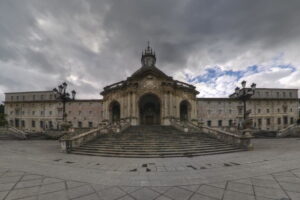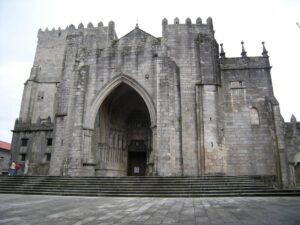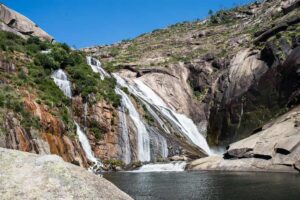
Just a few minutes away from the colourful harbour of Cudillero, on the Asturian coast, lies a spot that surprises the pilgrim with its tranquil beauty, its Indian legacy, and its spiritual essence: El Pitu. This parish, located on the Camino del Norte route, is a stop along the way that offers the pilgrim culture, architecture, and landscapes combining the green of the mountains with the blue of the Cantabrian Sea.
Índice de contenidos
- 1 The Camino del Norte: a route that captivates with every step
- 2 The parish of El Pitu: history, sea, and spirituality
- 3 The Church of Jesus of Nazareth: art, devotion, and Indian legacy
- 4 Selgas Palace and historic gardens
- 5 What to see near El Pitu: a walk through Cudillero and the coast
- 6 Recommendations for pilgrims arriving at El Pitu
The Camino del Norte: a route that captivates with every step
El Pitu is part of the Camino del Norte route, one of the oldest and most scenic and culturally rich pilgrimage routes. This itinerary runs along the northern Cantabrian coast from the Basque Country to Galicia, passing through natural landscapes, fishing villages, and historic monuments with low levels of mass tourism.
Unlike the traditional Camino Francés, it offers a more introspective experience, accompanied by the sound of the sea and the strength of the cliffs.
Moreover, this route is perhaps the most diverse of all the possible ways to reach Santiago. The Camino Santiago from Bilbao marks the start of a journey filled with urban and natural contrasts, while the Ribadeo Camino de Santiago offers an entrance to Galicia with a serene beauty.
Other routes of the Camino de Santiago
Every pilgrim finds their ideal route, and here are some of the most popular options:
- Camino Francés: the most traditional and crowded, it crosses the north of Castilla and León until it reaches Galicia.
- Camino Portugués: perfect for those looking for a balance between nature, tradition, and comfort. It starts in Portugal and crosses Galicia from the south. You can explore its more accessible version through the Camino from Tui to Santiago.
- Camino Inglés: ideal for pilgrims with limited time, it connects the northern ports of Galicia with Santiago.
Whichever route you choose, you can plan it with the help of Mundiplus, experts in assisting all types of pilgrims with their Camino de Santiago trips.
The parish of El Pitu: history, sea, and spirituality
El Pitu is one of the parishes that form part of the municipality of Cudillero. Its history is closely linked to the Indianos, emigrants who made their fortune in the Americas and returned to their homeland to invest in infrastructure and heritage. Thanks to their legacy, today El Pitu boasts some of the most notable monuments in the area.
Moreover, its location between the sea and the mountains makes it an ideal place for the pilgrim to rest. Halfway between the religious and rural, El Pitu offers a calm and welcoming rhythm that invites one to stop and reflect.
The Church of Jesus of Nazareth: art, devotion, and Indian legacy
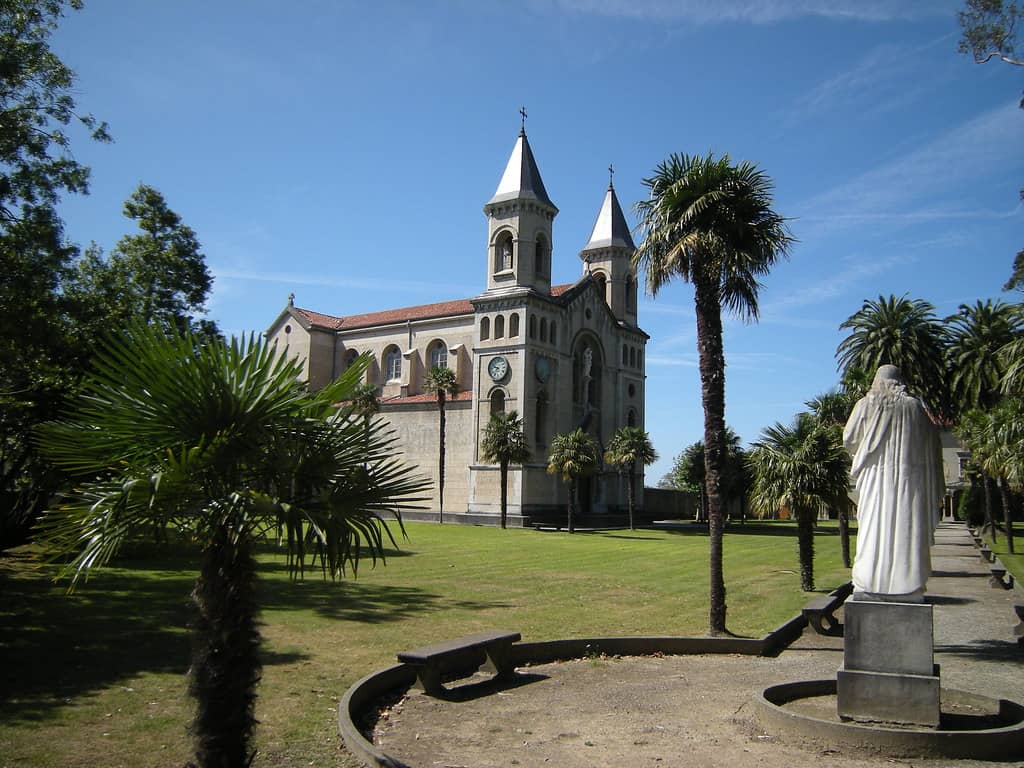
One of the great treasures of El Pitu is the Church of Jesus of Nazareth, one of the most important religious buildings in Asturias, funded in the late 19th century by the Selgas family, renowned Indianos who left a profound mark on the parish. It was inaugurated in 1914 by the Princess of Asturias.
This neo-Romanesque church-pantheon combines imposing architecture with rich interior decoration. Its stone façade, large stained glass windows, and side towers make it an icon of the local landscape. Inside, the main altar and decorative elements reflect the influence of Indianos patronage and the religious fervour of the time.
In addition to the statue of the Virgin with the Child, we also highlight the crypt, which contains the oldest religious altar in Spain.
Selgas Palace and historic gardens
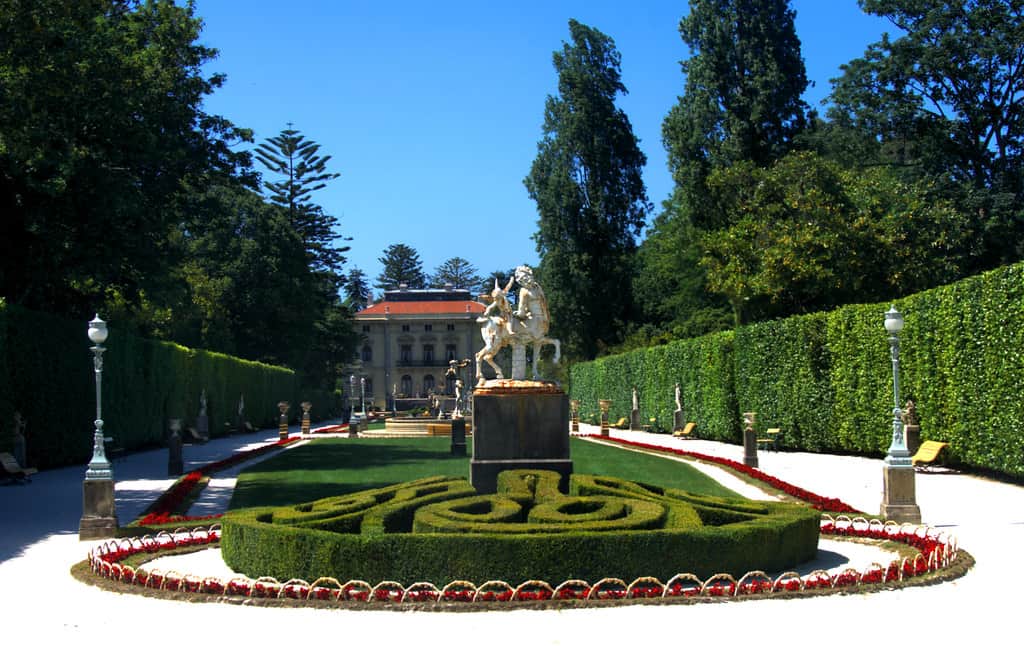
Very close by is another of El Pitu’s great attractions: the Palacio de los Selgas, an Indian residence built in the 19th century that houses one of the most valuable art collections in Asturias.
The complex, also known as the “Asturian Versailles“, features French and English-style gardens, greenhouses, fountains, and an art gallery with works by Goya, El Greco, and Titian. Although visits are limited to specific events or scheduled tours, its mere presence enriches the landscape and bears witness to the region’s Indian splendour.
What to see near El Pitu: a walk through Cudillero and the coast
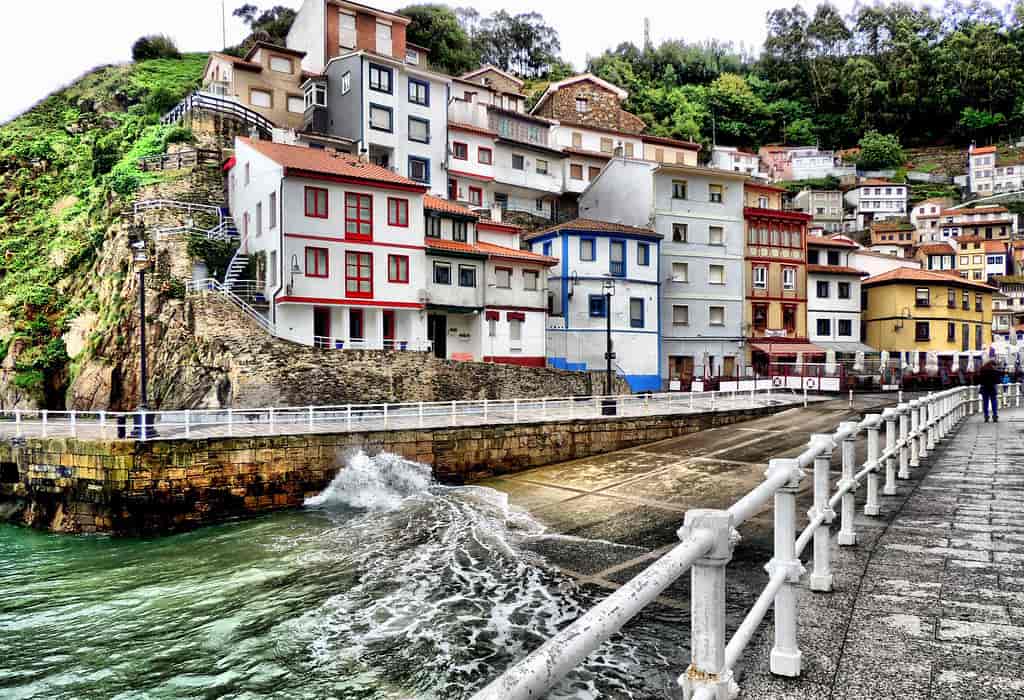
From El Pitu, you can easily access the centre of Cudillero (not even two kilometres), one of the most picturesque villages in Spain. We recommend descending via the local road or following the paths that wind around the hillside to discover the fishing village from above.
In Cudillero, you will find a natural amphitheatre formed by colourful houses climbing up the mountainside, an active fishing port, and a network of viewpoints offering spectacular views of the sea and the historic centre. Among the most well-known are the Garita viewpoint, the Pico viewpoint, and the Contorno viewpoint.
If you have time, you can also explore the coastline, with gems such as Playa del Silencio, Cabo Vidio, or Playa de Aguilar. All of these offer pure nature just a few kilometres from the route.
Is it worth staying overnight in El Pitu or nearby?
Definitely, although we advise you that it is not a regular stop if you are doing the pilgrimage with Mundiplus.
Although El Pitu does not have a large hotel infrastructure, its proximity to Cudillero allows you to choose from a wide range of rural accommodations, hostels, and charming hotels. The tranquillity of the surroundings makes it perfect for resting before continuing on the Camino.
Moreover, staying in this area allows the pilgrim to enjoy its monuments and landscapes without rushing. The connection with the Camino is assured, and the region’s hospitable atmosphere makes the stay a delightful experience.
Recommendations for pilgrims arriving at El Pitu
- Proper footwear: the stages of the Camino del Norte in this area have uneven terrain and sections of mountain and tarmac.
- Variable weather: bring waterproofs or a rain cape, even in summer.
- Documentation: keep your pilgrim’s credential handy to get stamps in churches or hostels.
- Enjoy without hurry: El Pitu deserves a long pause. Its views and heritage make it worth it.
- Consult professional assistance: if you need help on the route, Camino de Santiago travels offers logistical solutions for the modern pilgrim.
El Pitu is one of those places that don’t appear in the main guides but leave a lasting impression on the pilgrim’s heart. Its blend of history, spirituality, and landscape makes it an ideal spot to stop, reflect, and continue on with renewed energy.
Whether as an intermediate stage or a cultural getaway from Cudillero, it offers an experience that combines sea and mountain, art and faith, rest and beauty. All of this, sheltered by the Camino del Norte, a route that never fails to surprise the walker.

